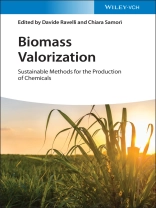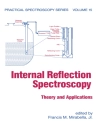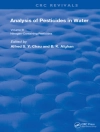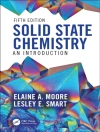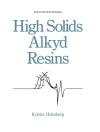Explore the potential of biomass-based chemicals with this comprehensive new reference from leading voices in the field
With the depletion of fossil raw materials a readily ascertainable inevitability, the exploitation of biomass-based renewable derivatives becomes ever more practical and realistic. In Biomass Valorization: Sustainable Methods for the Production of Chemicals, accomplished researchers and authors Davide Ravelli and Chiara Samori deliver a thorough compilation of state-of-the-art techniques and most advanced strategies used to convert biomass into useful building blocks and commodity chemicals.
Each chapter in this collection of insightful papers begins by detailing the core components of the described technology, along with a fulsome description of its advantages and limitations, before moving on to a discussion of recent advancements in the field. The discussions are grouped by the processed biomass, such as terrestrial biomass, aquatic biomass, and biomass-deriving waste.
Readers will also benefit from the inclusion of:
- A thorough introduction to the role of biomass in the production of chemicals
- An exploration of biomass processing via acid, base and metal catalysis, as well as biocatalysis
- A practical discussion of biomass processing via pyrolysis and thermochemical-biological hybrid processes
- A concise treatment of biomass processing assisted by ultrasound and via electrochemical, photochemical and mechanochemical means
Perfect for chemical engineers, catalytic chemists, biotechnologists, and polymer chemists, Biomass Valorization: Sustainable Methods for the Production of Chemicals will also earn a place in the libraries of environmental chemists and professionals working with organometallics and natural products chemists.
Daftar Isi
Foreword xi
Preface xiii
1 Role of Biomass in the Production of Chemicals 1
Layla Filiciotto, Evan Pfab and Rafael Luque
1.1 Introduction 1
1.2 Biomass Valorization 3
1.3 Lignocellulosic Biomass 5
1.4 Key Biomolecules 6
1.5 Solvents 10
1.6 Pretreatment of Lignocelluloses 12
1.7 Conclusions and Perspectives 15
References 15
Section I Catalytic Strategies 23
2 Biomass Processing via Acid Catalysis 25
Iurii Bodachivskyi, Unnikrishnan Kuzhiumparambil and D. Bradley G. Williams
2.1 Introduction 25
2.1.1 Is an Acid the Best Catalyst? 26
2.2 Acid-Catalyzed Processing of Cellulosic Polysaccharides 29
2.3 Acid-Catalyzed Processing of Lignin 44
2.4 Conclusions and Perspectives 47
References 47
3 Biomass Processing via Base Catalysis 57
Lichen Liu, Maria J. Climent and Sara Iborra
3.1 Introduction 57
3.2 Aldol Condensation 60
3.2.1 Aldol Condensation of Furanic Aldehydes 60
3.2.2 Self-Aldol Condensation of Acetone 63
3.2.3 Aldol Condensation Between Alcohols: Guerbet Coupling Reaction 64
3.3 Ketonization Reaction of Carboxylic Acids 65
3.4 Transesterification Reaction 68
3.4.1 Biodiesel Production 68
3.4.2 High Value-Added Chemicals from Transesterification Reactions 70
3.5 Conclusions and Perspectives 73
References 74
4 Biomass Processing via Metal Catalysis 81
Sofia Capelli and Alberto Villa
4.1 Introduction 81
4.2 Synthetic Strategies for Supported Metal Nanoparticles 83
4.2.1 Impregnation 83
4.2.2 Precipitation 84
4.2.3 Sol Immobilization 85
4.3 Furfural 86
4.3.1 Furfural Hydrogenation 87
4.3.1.1 Furfural to Furfuryl Alcohol 87
4.3.1.2 Furfural to Tetrahydrofurfuryl Alcohol 88
4.3.1.3 Furfural to Pentanediols 89
4.3.1.4 Furfural to 2-Methylfuran 90
4.3.2 Furfural Oxidation 92
4.3.2.1 Furfural to Furoates 92
4.4 5-Hydroxymethylfurfural (HMF) 92
4.4.1 HMF Hydrogenation 93
4.4.1.1 HMF to 2, 5-Dimethylfuran (DMF) 94
4.4.1.2 HMF to 2, 5-Dihydroxymethyltetrahydrofuran (DHMTHF) 95
4.4.2 HMF Oxidation 96
4.4.2.1 HMF to 2, 5-Furandicarboxylic Acid (FDCA) Using Monometallic Systems 96
4.4.2.2 HMF Oxidation over Bimetallic Catalysts 100
4.5 Conclusions and Perspectives 103
References 103
5 Biomass Processing with Biocatalysis 113
Roger A. Sheldon
5.1 Introduction 113
5.2 Generations of Renewable Biomass: Advantages and Limitations 113
5.3 Advantages and Limitations of Biocatalysis 116
5.4 Enzyme Discovery and Optimization of Enzyme Performance 117
5.5 Enzyme Immobilization 118
5.5.1 Enzyme Immobilization by Cross-linking Enzyme Molecules 119
5.5.2 Advantages and Limitations of Cross-Linked Enzyme Aggregates (CLEAs) 120
5.5.3 Magnetically Separable Immobilized Enzymes 120
5.6 Enzymatic Hydrolysis of Starch to Glucose 121
5.7 Enzymatic Depolymerization of Lignocellulose 122
5.8 Enzymatic Hydrolysis of Cellulose and Hemicellulose 123
5.8.1 Magnetizable Immobilized Enzymes in Lignocellulose Conversion 124
5.9 Enzymatic Hydrolysis of 3rd Generation (3G) Polysaccharides 124
5.10 Commodity Chemicals from Carbohydrates (Monosaccharides) 126
5.10.1 Fermentative Production of Commodity Chemicals 126
5.10.2 Deoxygenation via Dehydration of Carbohydrates to Furan Derivatives 129
5.10.3 Polyethylene Furandicarboxylate (PEF) as a Renewable Alternative to PET 129
5.10.4 Enzymatic Synthesis of Bio-based Polyesters 131
5.11 Enzymatic Conversions of Triglycerides: Production of Biodiesel and Bulk Chemicals 132
5.12 Conclusions and Perspectives 133
References 133
Section II Thermal Strategies 147
6 Biomass Processing via Pyrolysis 149
Daniele Fabbri, Yunchao Li and Shurong Wang
6.1 Brief Introduction 149
6.2 Chemicals from Cellulose Pyrolysis 151
6.2.1 General Aspects 151
6.2.2 Levoglucosan 154
6.2.3 Levoglucosenone 156
6.2.4 LAC, (1R, 5S)-1-Hydroxy-3, 6-Dioxabicydioxabicyclo-[3.2.1]octan-2-one 157
6.3 Chemicals from Lignin Pyrolysis 160
6.4 Pyrolysis of Biomass 161
6.4.1 Levoglucosan 161
6.4.1.1 Effects of Metal Oxides 162
6.4.1.2 Effects of Alkali and Alkaline Earth Metals 162
6.4.1.3 Effects of Acid Impregnation 162
6.4.1.4 Effects of Other Components 163
6.4.2 Levoglucosenone 163
6.4.2.1 Effects of Metal Chlorides 163
6.4.2.2 Effects of Acid Catalysts 163
6.4.2.3 Others 164
6.4.3 Furfural 164
6.4.4 Aromatic Hydrocarbons 167
6.4.5 Phenolic Compounds 169
6.5 Conclusions and Perspectives 170
References 171
7 Biomass Processing via Thermochemical–Biological Hybrid Processes 181
Cristian Torri, Alessandro Girolamo Rombolà, Alisar Kiwan and Daniele Fabbri
7.1 Introduction 181
7.1.1 Hybrid Thermochemical/Biological Processing with Single-Strain Microorganisms 183
7.1.2 Hybrid Thermochemical/Biological Processing with Microbial Mixed Consortia (MMC) 183
7.2 Pyrolysis Products (Py P) from the Microorganism’s Standpoint 185
7.2.1 What Pyrolysis Can Do for Microorganisms: Yields and Bioavailability of Py P 186
7.2.2 Viable Pathways According to Thermodynamics Laws 188
7.2.3 Rate of MMC Biological Conversions in Relationship with Py P Treatment 191
7.2.4 Toxicity of Py P Toward MMC 193
7.3 Conversion of Py P with MMC: Survey of Experimental Evidence 198
7.3.1 Syngas Conversion to Methane 203
7.3.2 Syngas Conversion to H2, Volatile Fatty Acids (VFA), and Alcohols 203
7.3.3 Conversion of Condensable Py P to Methane 205
7.3.4 Conversion of Condensable Py P to VFA and Other Intermediates 206
7.4 Feasible Pathways for Producing Chemicals from Py P with MMC 207
7.4.1 Hybrid Pyrolysis Fermentation and Extraction of Mixed VFA/Alcohols 207
7.4.2 Alkaline Fermentation of Pyrolysis Products to VFA Salts, Ketonization, and Hydrogenation to C3–C6 Mixed Alcohols 209
7.4.3 Alkaline Fermentation of Pyrolysis Products to VFA Salts and Polyhydroxyalkanoates (PHA) Production via Aerobic MMC 211
7.4.4 Direct Alcohol Production by Means of Fermentation of Py P under High Hydrogen Pressure 213
7.5 Conclusions and Perspectives 215
References 216
Section III Advanced/Unconventional Strategies 225
8 Biomass Processing via Electrochemical Means 227
Roman Latsuzbaia, Roel Johannes Martinus Bisselink, Marc Crockatt, Jan Cornelis van der Waal and Earl Lawrence Vincent Goetheer
8.1 Introduction 227
8.2 Electrochemical Conversion of Bio-Based Molecules 228
8.3 Conversion of Sugars 230
8.4 Conversion of Furanics 234
8.4.1 5-(Hydroxymethyl)furfural (5-HMF) 234
8.4.1.1 5-HMF Oxidation 235
8.4.1.2 5-HMF Reduction 238
8.4.2 Furfural 240
8.5 Conversion of Levulinic Acid 244
8.6 Conversion of Glycerol 246
8.7 Lignin Depolymerization 248
8.8 Scale-up of Electrosynthesis of Biomass-Derived Chemicals 248
8.9 Conclusions and Perspectives 254
References 254
9 Biomass Processing via Photochemical Means 265
Andrey Shatskiy and Markus D. Kärkäs
9.1 Introduction 265
9.2 Fundamental Aspects of Photoredox Catalysis 266
9.3 Photochemical Valorization of Lignin 267
9.3.1 Strategies for Cα—Cβ Bond Cleavage 268
9.3.2 Strategies for Lignin Oxidation and Cβ—O Bond Cleavage 272
9.3.3 Strategies for Ar—O Bond Cleavage 278
9.4 Conclusions and Perspectives 281
References 282
10 Biomass Processing via Microwave Treatment 289
Roberto Rosa, Giancarlo Cravotto and Cristina Leonelli
10.1 Introduction 289
10.2 Microwave–Matter Interaction: Advantages and Limitations in the Processing of Biomass 291
10.3 Microwave Pyrolysis 296
10.4 Microwave-assisted Hydrolysis 299
10.5 Microwave-assisted Extraction of Phytochemical Compounds 303
10.6 Conclusions and Perspectives 306
References 307
11 Biomass Processing Assisted by Ultrasound 315
Cezar A. Bizzi, Daniel Santos, Gabrielle D. Iop and Erico M. M. Flores
11.1 Introduction 315
11.2 Ultrasound Background 316
11.3 Ultrasound-Assisted Biomass Pretreatments 319
11.4 Ultrasound-Assisted Biomass Conversion 322
11.4.1 Thermochemical Conversion Assisted by Ultrasound 323
11.4.2 Biochemical Conversion Assisted by Ultrasound 324
11.4.3 Chemical Conversion (Synthesis) Assisted by Ultrasound 325
11.5 Ultrasound-Assisted Extraction of Value-Added Compounds 326
11.5.1 Ultrasound Contribution to Biomass Extraction Processes 326
11.5.2 Uses of Alternative Approaches for Biomass Extractions Assisted by Ultrasound 328
11.6 Alternative Solvents 331
11.7 Conclusions and Perspectives 332
References 333
12 Biomass Processing via Mechanochemical Means 343
George Margoutidis and Francesca M. Kerton
12.1 Overview and Introduction 343
12.1.1 Background to the Method 343
12.1.2 Properties of a Typical Laboratory Mixer/Mill 346
12.2 Crystallinity Reduction in Biopolymers via Mechanochemistry 348
12.3 Mechanochemical Transformations of Polysaccharides 352
12.3.1 Cellulose Depolymerization 352
12.3.2 Cellulose Modification Toward Composite Materials 355
12.3.3 Transformations of Chitin 355
12.4 Mechanochemical Transformations of Amino Acids, Nucleotides, and Related Materials 357
12.5 Mechanochemical Treatment of Lignin 359
12.6 Biominerals from Mechanochemical Processing of Biomass 360
12.7 Conclusions and Perspectives 361
References 361
Section IV Closing Remarks 367
13 Industrial Perspectives of Biomass Processing 369
Tommaso Tabanelli and Fabrizio Cavani
13.1 Replacing Existing Petrochemicals with Alternatives from Biomass: An Introduction 369
13.2 Oleochemical Biorefinery: A Consolidated and Multifaceted Example of Biomass Processing 371
13.2.1 Biofuels and Coproduced Chemicals from Oils and Fats 371
13.2.2 Skeletal Isomerization of Unsaturated Fatty Acids for Isostearic Acid Production 379
13.2.3 Bio-based Synthesis of Azelaic and Pelargonic Acids: A Renewable Route Toward Bio-based Polyesters and Cosmetics 382
13.3 From Sugar to Bio-monomers: The Case of 2, 5-Furandicarboxylic Acid (FDCA) 385
13.4 From Bioethanol to Rubber: The Synthesis of Bio-butadiene 388
13.5 Conclusions and Perspectives 391
References 391
Index 411
Tentang Penulis
Davide Ravelli is Assistant Professor at the Photo Green Laboratory of the University of Pavia. His research focus is on photochemical reactions and their applications in various fields, especially sustainable organic synthesis.
Chiara Samorì is Assistant Professor at the Green Chemistry Lab of the University of Bologna. She is primarily interested in the extraction of biomass using sustainable solvents for producing third generation biofuels, bioactive compounds, and bioplastics.
